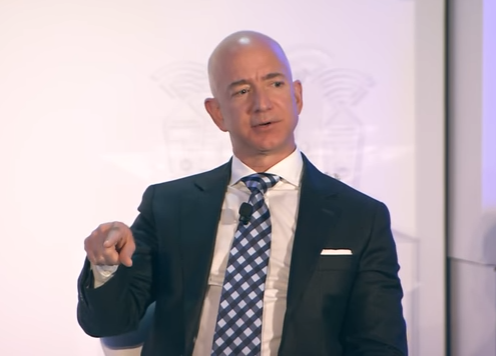
The New York Times: For Amazon, the deal marks an ambitious push into the mammoth grocery business, an industry that in the United States accounts for around $700 to $800 billion in annual sales. Amazon is also amplifying the competition with Walmart, which has been struggling to play catch-up to the online juggernaut.
For Whole Foods, the deal represents a chance to fend off pressure from activist investors frustrated by a sluggish stock price. Whole Foods last month unveiled a sweeping overhaul of its board, replacing five directors, naming a new chairwoman and bringing in a new chief financial officer. It also laid out plans to improve operations and cut costs.
With Amazon, Whole Foods gets a deep-pocketed owner with significant technological expertise and a willingness to invest aggressively in a quest for dominance.
Amazon has designs on expanding beyond online retail into physical stores. The company is slowly building a fleet of outlets, and much attention has been focused on its supermaket dreams. It has already made an initial push through AmazonFresh, its grocery delivery service.
The e-commerce giant has been testing a variety of other retail concepts. It has opened a convenience store that does not need cashiers, and has explored another grocery store concept that could serve walk-in customers and act as a hub for home deliveries.
Under the terms of the proposed deal, Amazon would pay $42 a share for Whole Foods, a 27 percent premium to Thursday’s closing price. After the deal was announced, shares of Amazon rose as much as 3.3 percent while other major retailers, including Target, Walmart and Costco Wholesale fell sharply.
Whole Foods, which was founded in 1978 in Austin, Tex., is best known for its organic foods. The company built its brand on healthy eating and staked its reputation on fresh, local produce, albeit with a high price tag.
But the company has increasingly faced fierce competition from rival supermarkets. National retailers like Costco, Safeway and Walmart have begun offering organic produce and kitchen staples, forcing Whole Foods to slash prices.
Whole Foods has been feeling the heat to bolster its stock for more than a year.
John Mackey, a founder, took over as sole chief executive last year, in a bid to revive the company. Money managers, unhappy with the pace of the turnaround effort, have pushed for more, taking aim at the board, its grocery offerings and its pricey real estate holdings.
The activist hedge fund Jana Partners raised the pressure in April, announcing that it had become the second-biggest shareholder in Whole Foods. Almost immediately, the stock spiked.
In a defensive posture, Whole Foods, a few weeks later, revamped its board and replaced its chief financial officer. Gabrielle Sulzberger, a private equity executive, was named the company’s chairwoman. Ms. Sulzberger is married to Arthur O. Sulzberger Jr., the chairman and publisher of The New York Times.
For Amazon, the deal represents both a major pivot into bricks-and-mortar stores and one of the largest categories of retailing — groceries — that it has just barely made a dent in through its online efforts.
The company has increasingly experimented with physical stores, opening a small chain of book stores across the country. In Seattle, it recently opened two drive-through grocery pickup locations for customers who order their items online.
But those efforts are nothing compared to the number and size of stores they will acquire through the Whole Foods deal. The grocery chain encompasses more than 460 stores in the United States, Canada and Britain with sales of $16 billion in the last fiscal year.
“The Whole Foods acquisition provides them more physical locations,” said Mikey Vu, a partner at the consultancy Bain & Company who is focused on retail. “They’re going to be within an hour or 30 minutes of as many people as possible.”
The deal immediately raised questions about how Amazon planned to use technology to update Whole Foods stores.
In one of the internet retailer’s more notable bricks-and-mortar experiments, a convenience store in Seattle called Amazon Go uses a combination of sensors and cameras to automatically keep track of the items shoppers put into their baskets, letting them simply walk out of stores without the need for cashiers.
Amazon has no plans to use the technology it developed for Amazon Go to automate the jobs of cashiers at Whole Foods, said Drew Herdener, a spokesman for Amazon. No job reductions are planned as a result of the deal, he said.




